Introduction
Recently, researchers at Purdue University in the United States developed a new type of low-cost, portable, self-powered, paper-based medical diagnostic device that can detect biomarkers and diagnose diseases.
Keywords
Medical Electronics、Self-Powered、Sensors
Background
Traditional medical diagnostic devices are often perceived as: bulky, expensive, difficult to operate, and requiring a long time to obtain diagnostic results. These factors have hindered the further development and popularization of medical technology, especially in developing countries and remote areas.
However, with continuous innovations and breakthroughs in fields such as the Internet of Things, sensors, artificial intelligence, materials, flexible electronics, and wearables, an increasing number of miniaturized, portable, low-cost, and easy-to-operate medical diagnostic devices are emerging.
For example, I previously introduced a USB device for HIV testing that can provide results in 30 minutes; an automated diagnostic test reader that uses a smartphone to read bacterial resistance values; a smartphone spectrometer for cancer detection that can provide lab-level results; a smartphone-based semen analyzer that allows you to conduct semen tests at home; and a breath analyzer composed of a nano-sensor array that can detect 17 different types of diseases through exhalation. In addition, there are various chip laboratories and biosensor devices.
Innovation
Today, I am introducing a very distinctive innovative technology that allows everyone to better appreciate the cutting-edge innovations in the field of medical devices. Recently, researchers at Purdue University developed a new type of medical diagnostic device made of paper that can detect biomarkers and diagnose diseases through electrochemical analysis. This device is powered by a “self-powered” method, and users only need to touch it to provide energy. Additionally, it provides a color-based test result that can be easily understood by non-professionals.
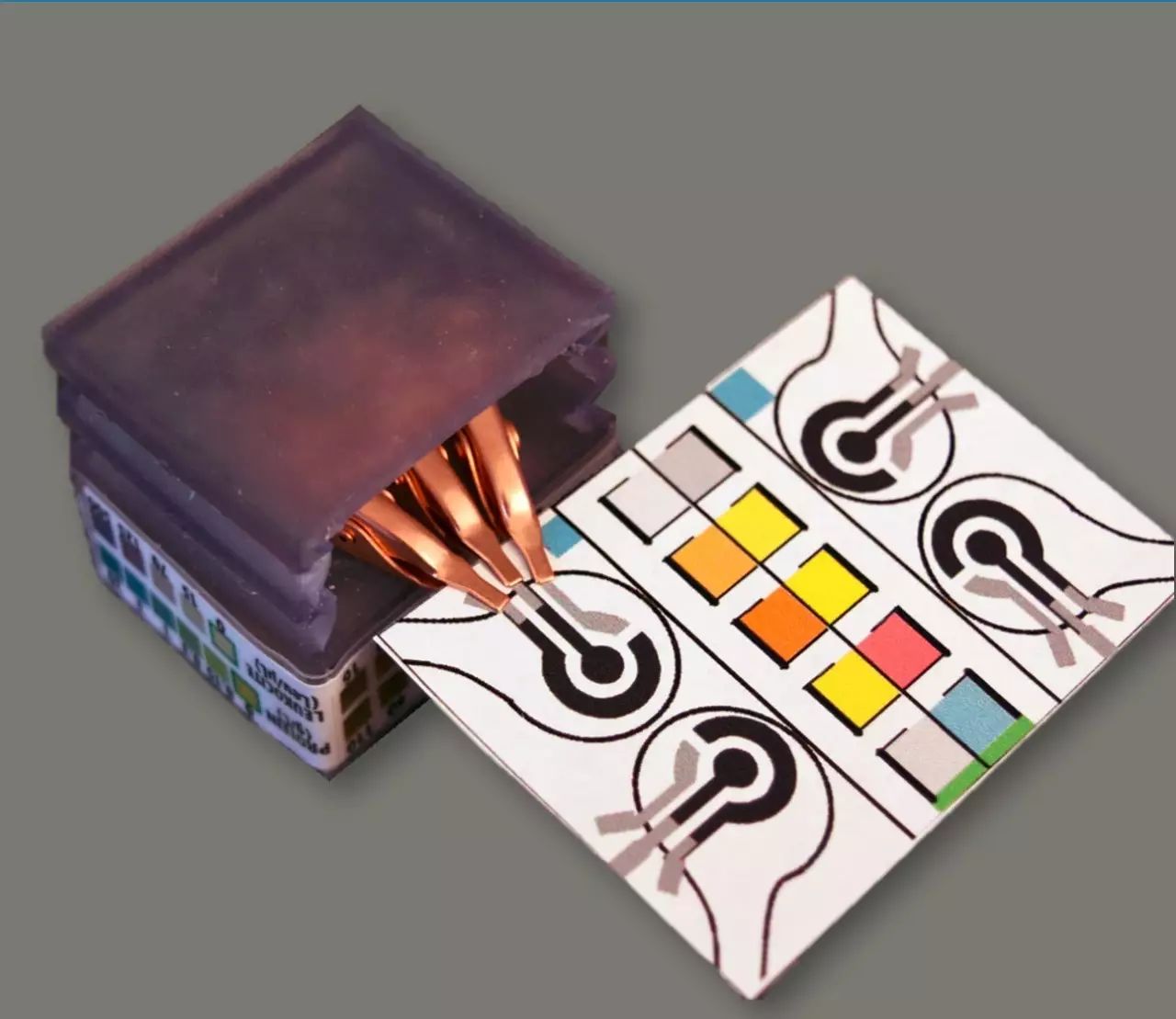
(Image source: Purdue University/Aniket Pal)
The research results are detailed in a paper published on August 22 in Advanced Materials Technologies. The paper was co-authored by Ramses V. Martinez, an assistant professor in industrial and biomedical engineering at Purdue University, along with graduate students Aniket Pal and Debkalpa Goswami, visiting scholars Hugo E. Cuellar and Heloisa F. N. Caurin, and high school student Randy Kuang.
Technology
The research paper mainly describes concepts such as SPED, TEG, portable potentiostats, and machine vision algorithms for identifying different color information. SPED is the abbreviation for self-powered paper-based electrochemical devices.
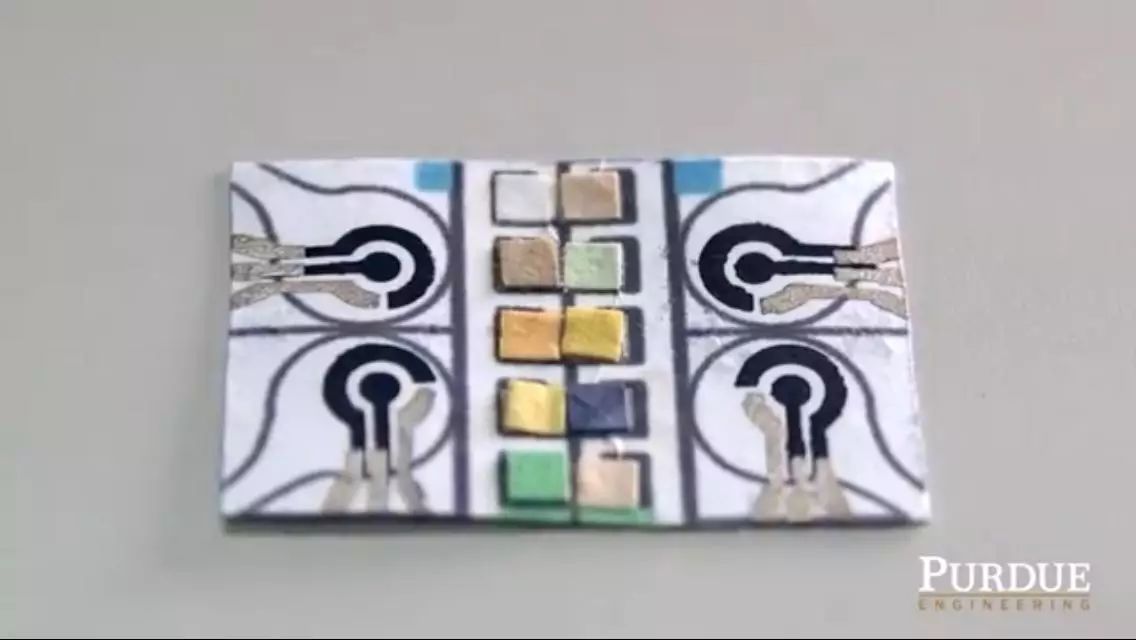
(Image source: Purdue University)
The initial step of the test is to drop a drop of blood on the circular part of the device. This circular area is smaller than a two-inch square. SPED also includes “self-pipetting test zones,” which can soak up samples without the need for finger pricking.
The top layer of SPED is made from untreated cellulose paper, with patterned hydrophobic “domains” added. These “domains” define certain channels that rely on capillary action to draw blood samples for testing. These “microfluidic channels” can precisely determine color changes to display specific test results.
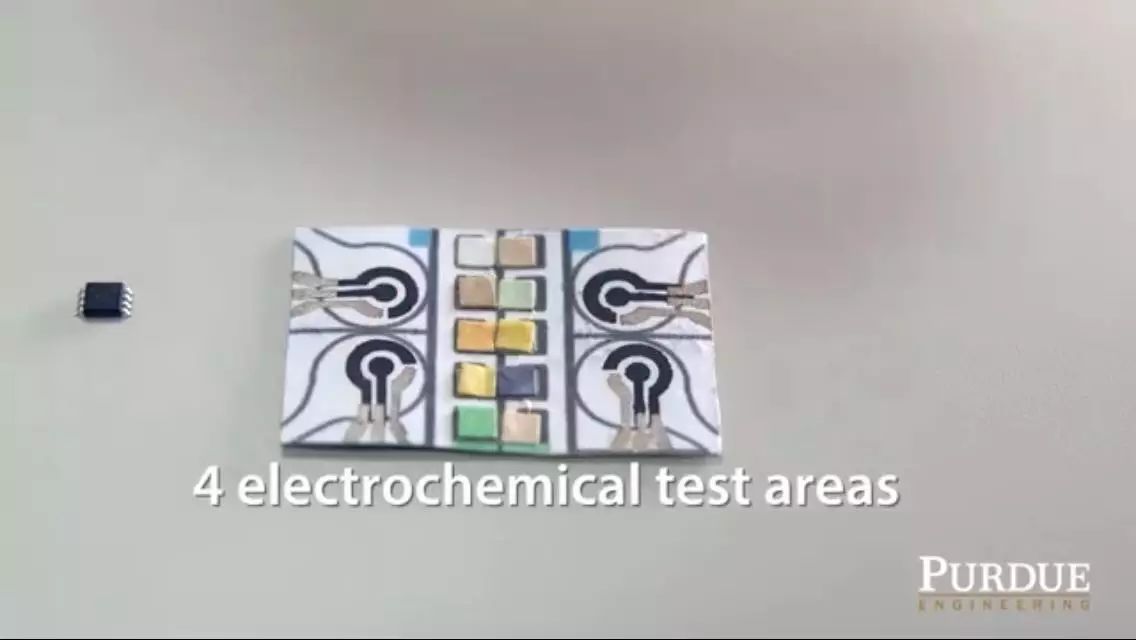
(Image source: Purdue University)
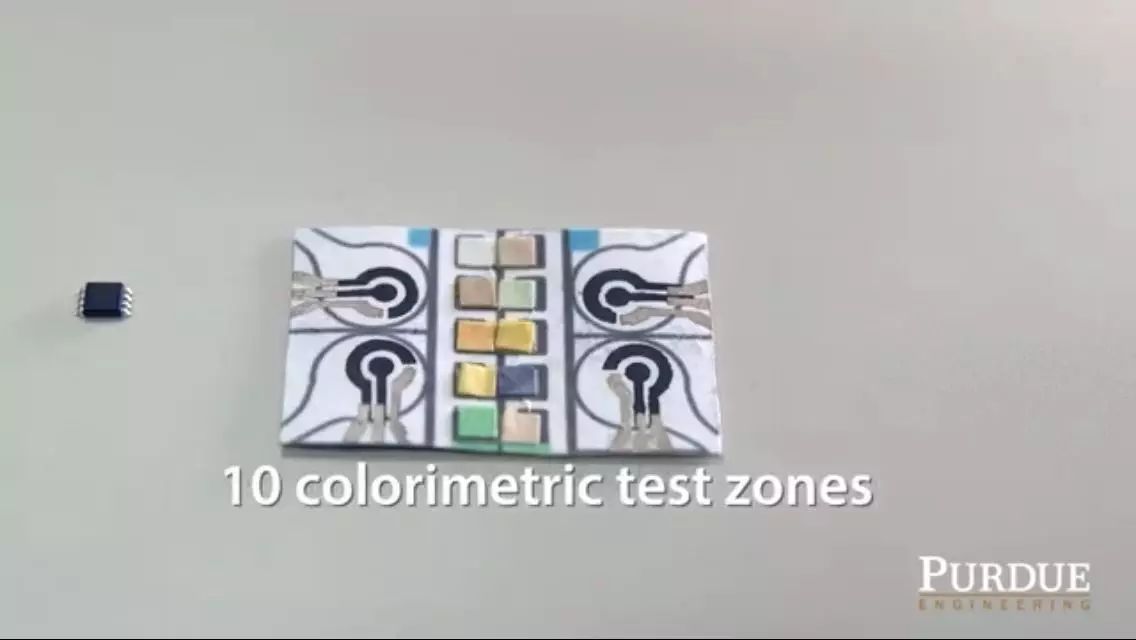
(Image source: Purdue University)
Additionally, the researchers designed a machine vision diagnostic application, possibly on a smartphone. It can automatically identify and quantify each “colorimetric” test result from SPED’s digital images, providing users with rapid diagnostic results and facilitating remote expert consultations.
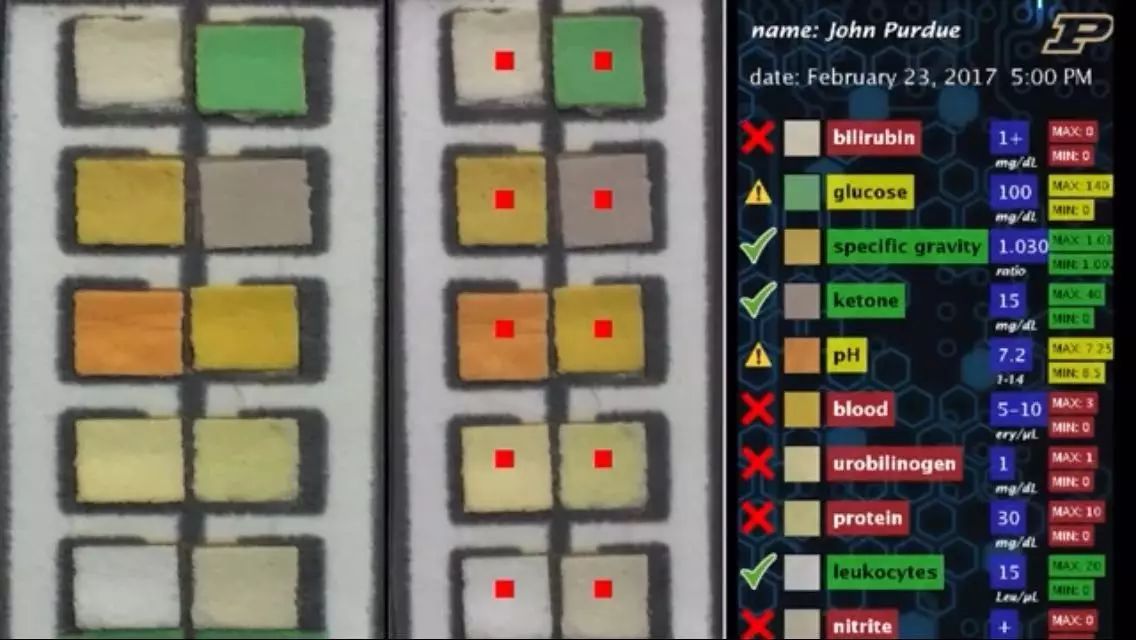
(Image source: Purdue University)
The bottom layer of SPED is a “triboelectric generator,” also known as “TEG,” which is the key component for achieving self-power. By simple friction or pressing, it can generate enough current to run diagnostic tests.
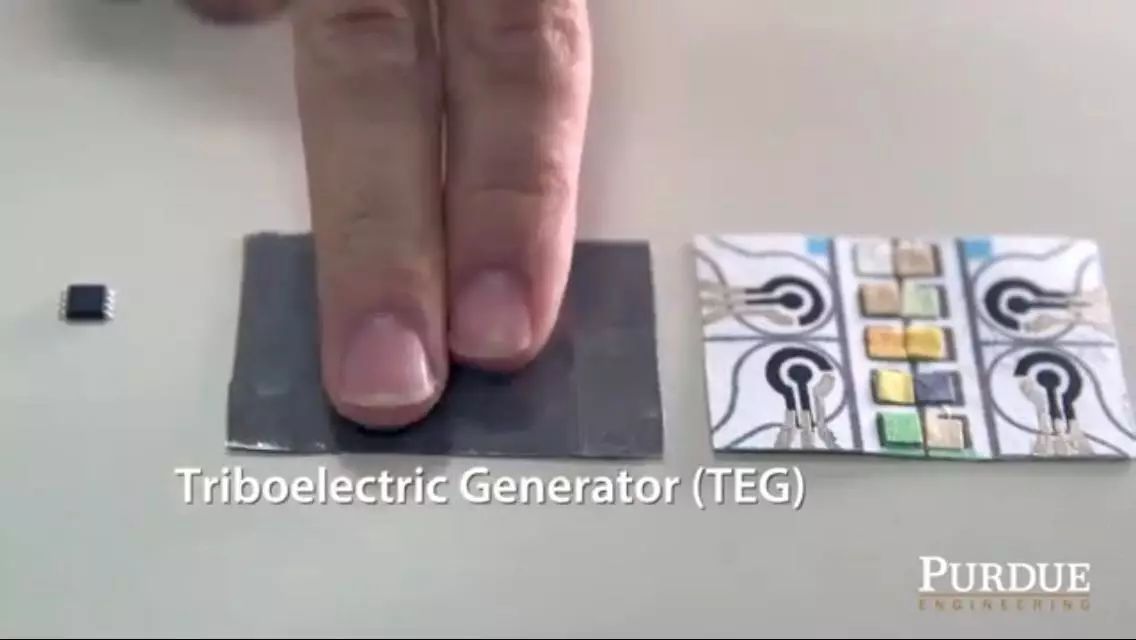
(Image source: Purdue University)
The researchers also designed a low-cost handheld device, known as a “potentiostat.” It can be simply inserted into SPED to automate the diagnostic tests, allowing untrained users to perform testing. The battery powering the potentiostat can be recharged via the TEG built into SPED.
Value
First, let’s see how Martinez evaluates this technology:
“You can think of it as a portable laboratory device, entirely made of paper, cheap, and can be disposed of by incineration. We hope this device can serve untrained personnel located in remote areas or military bases to test a range of diseases without the need for any electricity, clean water, or other equipment.”

(Image source: Purdue University)
“SPED is low-cost, lightweight, flexible, and easy to use.”
“To our knowledge, this research reports the first self-powered, paper-based device that can combine low-cost, portable, and a potentiostat that is recharged using a paper-based TEG for rapid, accurate, and sensitive electrochemical analysis.”
SPED can be compatible with large-scale printing technologies, such as roll-to-roll printing or spray deposition. They can conduct “multiplexed” analysis for highly sensitive and accurate detection of various targets for a series of point-of-care tests. Additionally, they can also power other electronic devices, facilitating telemedicine applications in resource-limited environments.
SPEDs can be used to detect biomarkers such as glucose, uric acid, L-lactic acid, ketones, and white blood cells, which are related to liver and kidney function, malnutrition, and anemia. In the future, this technology will add several layers for more complex determinations, detecting dengue fever, yellow fever, malaria, HIV, and hepatitis.
References
[1]http://www.purdue.edu/newsroom/releases/2017/Q3/self-powered-paper-based-speds-may-lead-to-new-medical-diagnostic-tools.html
[2] Aniket Pal, Hugo E. Cuellar, Randy Kuang, Heloisa F. N. Caurin, Debkalpa Goswami, Ramses V. Martinez. Self-Powered, Paper-Based Electrochemical Devices for Sensitive Point-of-Care Testing. Advanced Materials Technologies, 2017; 1700130 DOI: 10.1002/admt.201700130

For more cutting-edge technology articles, please click “Read Original”. For consultation and communication, please contact WeChat: JohnZh1984.